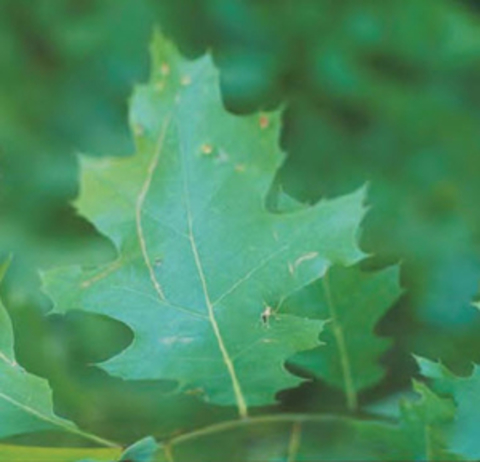Quick facts
-
Oaks are found in nearly all upland hardwood forests.
-
Horses must eat a lot of oak buds or green acorns before showing symptoms of poisoning.
-
Feed refusal, constipation and frequent urination are all signs of poisoning.
-
Keep oak branches out of reach of the horses and fence off areas plentiful with green acorns.
Identifying
Leaves
-
Drop in the fall
-
Cluster at the ends of twigs
-
Dead leaves often remain on the tree over winter
-
Red oaks have pointed leaves with bristle-tipped lobes
-
White oaks have round lobes or large regular teeth
Acorns
-
Nuts with tough leathery shells
-
Mature in one or two seasons
Oaks are common across the temperate regions of the Northern Hemisphere.
Oaks are found in nearly all upland hardwood forests. Most oaks don’t tolerate, or mildly tolerate, shade and competition depending on the species.
Toxicity
Oak buds in the spring and green acorn hulls in the fall cause oak poisoning in horses. Oak toxins are highest in:
-
Immature leaves
-
Members of the black and red oak species
-
Immature acorns
The chemical toxins tannin and gallotannin are likely responsible for oak poisoning in horses. But researchers haven’t identified all the toxins in oak.
Animals must eat large amounts of oak buds or green acorns for a few days to a week before showing signs of poisoning.
-
Refusing feed
-
Constipation
-
Diarrhea
-
Colic
-
Swelling in the neck or belly area
-
Frequent urination
Horses may need supportive treatment for kidney and gut damage. This includes fluid and electrolyte therapy. Some horses may need a few weeks worth of treatment.
The best way to prevent oak poisoning in horses is through fencing and avoiding buds and green acorns.
Control
You don’t need to cut down oak trees in your horses pastures. Keep the branches trimmed and out of reach of horses. Fence around young or small oaks for protection. Fence horses out of areas where green acorns are plentiful.
Reviewed in 2021




